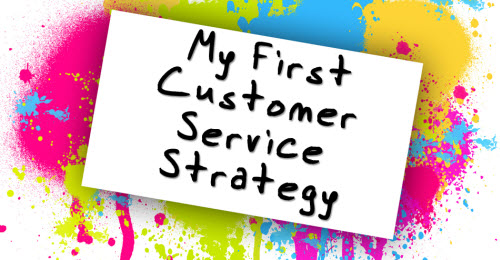
What are the management implications of trying to live by a customer service strategy?
Previous sessions (one, two, three and four) have already explored quite a bit of the relevant context and content for painting a customer service strategy if you want to catch up.
In this next set of sessions, I’m assuming you already have one in your purse or back pocket and are now ready to move onto ‘maintenance’ considerations. By this I mean tilling the corporate soil to ensure optimal rooting and blooming. Or if the gardening metaphors don’t do it for you, starting to think about the numerous, ongoing circumstances that can undo all your hard work up to this point.
Let me explain with a little scene setting.
The Problems With Not Thinking It Through
I’m sure you’ve noticed the vast majority of corporate solutions for supporting customers are arrived at in isolation. No doubt the decisions that give the green light to each solution have sufficient, stand-alone logic to feel like progress is being made. The trouble comes when they have to operationally co-exist with other each. Piecemeal design never works. That’s why ‘strategies need painting’ to provide view of the full landscape.
What is even more galling is that these decision makers are normally completely unaware of the downstream chaos they cause. So, in reaction to these ‘unwelcome’ consequences, such as slipped time-scales and performance shortfalls, they further compound a situation by piling on the pressure to demand things work immediately. Something has to give and so the usual outcome is shoddy implementation that shows up later in either sub optimal running costs or disappointing C-sat scores. But, underneath it all, their sloppy thinking is really to blame.
How A Lack Of A Strategy Prevents Excellence Breaking Out
These kind of downsides are well known. They are experienced throughout the length and breadth of the global customer service community as daily frustrations. And just to make sure the operational backdrop I’m sketching out is crystal clear in your mind, here’s the top three symptoms you’ve no doubt come across in one form or another:
- Functionality across a set of separately commissioned solutions is either duplicated, missing or somehow just does not join up as intended to support the kind of smart customer interaction that wins you kudos
- Decisions previously made in isolation, have introduced cultural tension between old and new ways of working or between teams that find themselves driven by incompatible goals and rewards
- Globally imposed solutions that may suit one team but then fail to meet the more demanding needs of another team and therefore compromises their operational effectiveness going forward
It’s no news to anyone on the receiving end of these kind of fractious episodes that the odds become stacked against delivering a top drawer customer experience. Choices about personal standards then become stark. Either leave in protest or get used to mediocrity. Sadly the need to put bread on the table makes the decision for most.
Of course your own corporate circumstance may be quite different from the one I’ve just suggested. In which case the following punchline won’t be quite as useful to you. But hey that’s the price of being the best. For the rest of us, here’s the point I’ve been building up to.
As you introduce your customer service strategy for the first time, it will be launched into the operational maelstrom of blinkered thinking just described. If so, be aware that its first test of credibility will be to put the brakes on the domino effect of poor decision making just described.
Sell The Value Of Strategy As Practical Benefits
Put more simply, strategy needs to look useful to the time-poor, single-track executive who has to punch out all these decisions. So position your customer service strategy as a useful reference that helps them make smart decisions which means less to clear up downstream.
So the first test is to stay afloat. If not immediately sunk in the current culture of short termism, then the real function of strategy starts. It’s your job to communicate, promote, discuss and generally work damned hard to make the strategy a natural point of reference whenever important decision making is about to occur.
If you manage that you will have produced something with teeth that actually makes a qualitative difference to every day customer service. And you can be proud of your achievement.
Next time, I’ll be considering what happens to strategic continuity when the customer service leadership keep leaving mid transformation to further their own careers.





Hi Martin,
Thank you describing the corporate challenges that many face when trying to implement changes to customer experience and customer service. I think your point about making the lives of people internally look good or make their lives easier is a good one as it seems to be that, even though, the strategy is to benefit the business and its customers. In reality and in the short term, your first line customers are the people internally that you are trying to benefit. Keeping that in mind should help make the case.
Adrian
Hi Adrian,
Thanks for the comment.
Yes, it’s an interesting challenge to try and change a short term way of working to a more strategic one. Sounds fine in theory but hard to affect in practice. Making this internal group of decision makers the first beneficiaries of the strategy is a smart first step